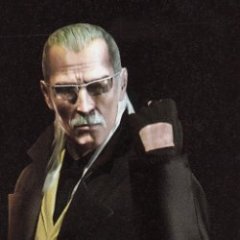-
Posts
3201 -
Joined
-
Last visited
-
Days Won
109
peter_spy last won the day on January 27
peter_spy had the most liked content!
Reputation
1821 DeityAbout peter_spy
- Birthday 01/01/1981
Profile Information
-
Gender
Male
-
Location
Central Europe
-
Interests
Playing bass!
Recent Profile Visitors
The recent visitors block is disabled and is not being shown to other users.
-
Nothing that can't be resolved with proper doc comments.
-
Not sure why you think these are mutually exclusive. Good coding standards strive for clarity as well.
-
Btw. Justin Marshall (aka icecoldduke), ex-id engine programmer, started a wiki for OG idtech4/5 engines, and he included a style guide there. Not sure whether this was used at id, but it might be useful. http://doomarchives.com/home/doom3/styleguide
-
IMO it's one of these cases again, where you try to solve asset-level problem by making changes on the engine level. What I'm interested the most though: let's say I have custom candle assets / entities in my WIP that work like in Thief 3 (first frob extinguishes candles, second one picks them up). Will these changes break it?
-
They are there for a reason though, not just because someone said so. If you want to communicate with people and you work on the code with someone, you need to share some common principles. And while I agree that things like clean code can be a bit extreme at times, I've never seen anyone questioning it super hard; neither stuff like solid principles, for example. Obviously, you can be a rebel if you want to, but you'll probably end up working alone.
-
Ah, you're right, it can be more language-specific or even project-specific. We often used setters that returned this, so we could use method chaining, but this isn't a general rule.
-
It seems to me like this is ignoring basic naming conventions in programming, stuff I was taught during my first days of work. If a method gets or sets a value of a certain type, it returns that value type. On the similar principle, all methods that return boolean always start with isSomethingSomething, etc.
-
IMO it's better to create test maps for such cases, who knows how AAS and monsterclip layout looks like in this mission. Also, it might be a subjective question of how picky you are. I wouldn't mind that guard going in a general direction of where the damage came from; it kinda looks like he assumed the attacker has already changed his position, which is not a bad idea itself
-
I'd say "writeFloat" method that returns void is bigger cringe here.
-
It's amazing people still make those, and this one is really good. Also, probably the most British point & click adventure game as of late.
-
Thank you for sharing this. People need to hear more stories like that, since designing stealth levels is probably one of the hardest things to do, and it's easy to get burned out and drop it.
-
I've never been into deck building games, but this one is excellent. Fairly complex, but unfolding slowly, and super addictive. The "just one more go" syndrome is strong with this one
-
It's an asset flip, the same face, nose, lips, even marks around the eyes, just the different hair https://duckduckgo.com/?t=ffab&q=heather+from+silent+hill+3&iax=images&ia=images&iai=https%3A%2F%2Fi.pinimg.com%2Foriginals%2F0f%2F20%2Fcd%2F0f20cdfccec60eab127aff236c63b3de.jpg I played the game ages ago and recognised her immediately, so others will too. Just remove it, it's cringe.
-

Having an issue with areas and ambient sounds
peter_spy replied to Skaruts's topic in TDM Editors Guild
FWIW, I loaded up your FM and I only had that abrupt sound at the mission start. Both transitions to other areas and loading saves from them worked fine for me. -
That reminds me, has Heather from Silent Hill 3 (female head) been finally removed? Edit: lol, nope:


